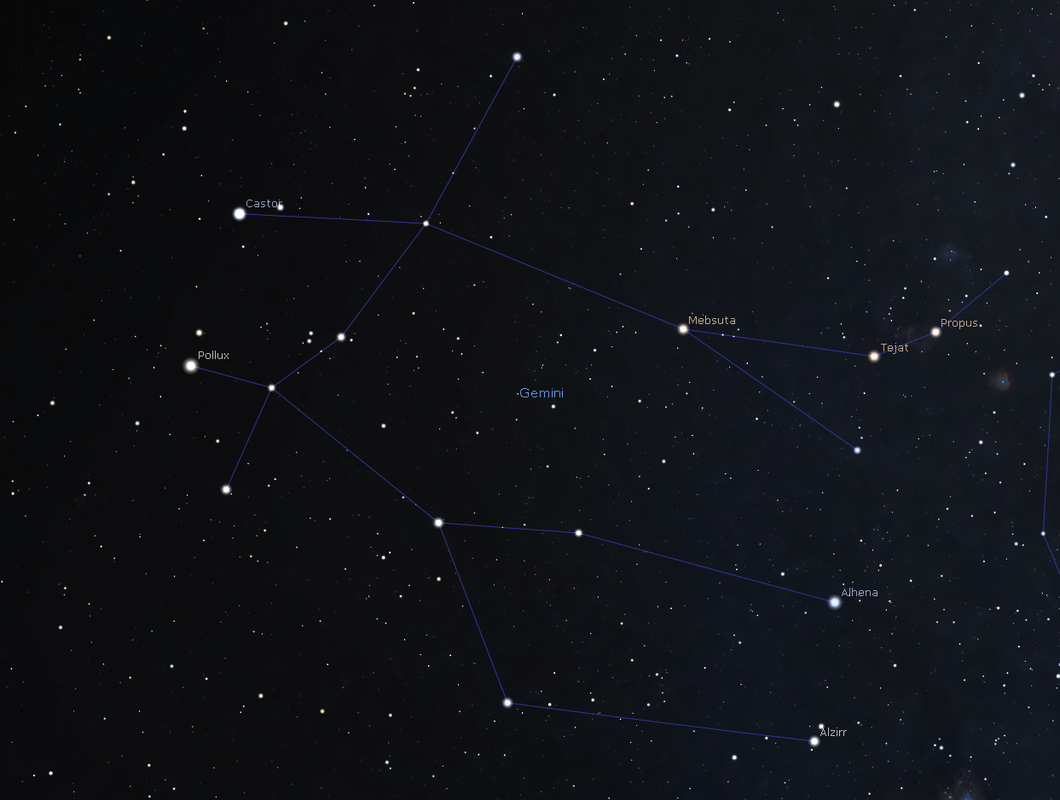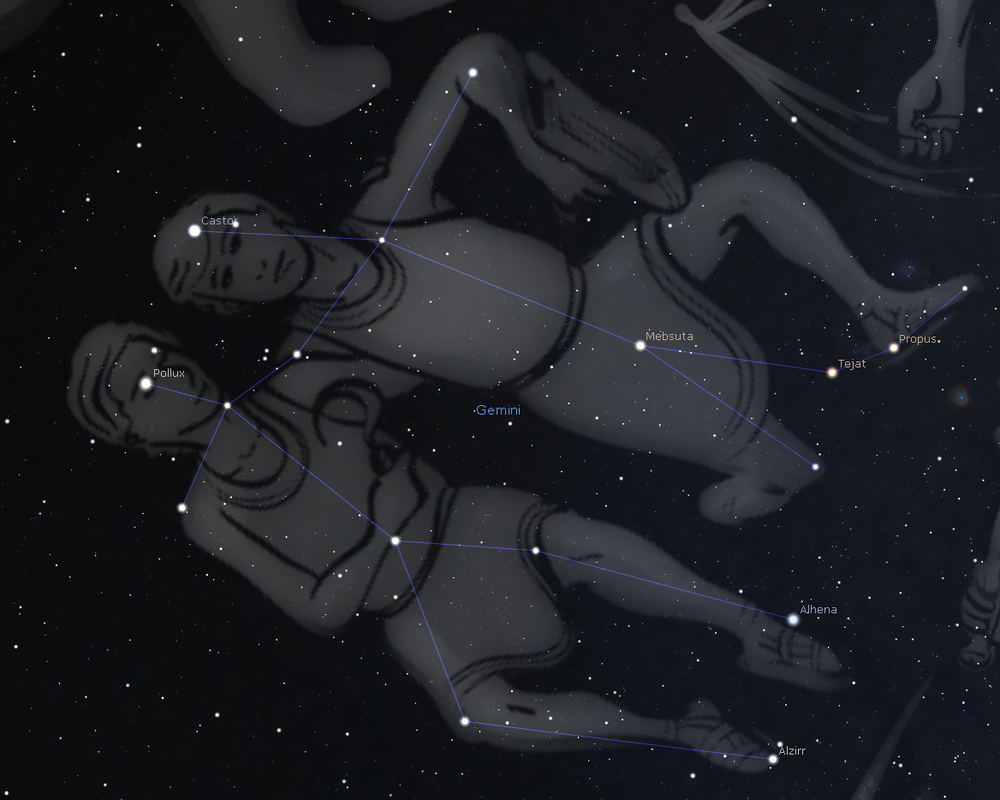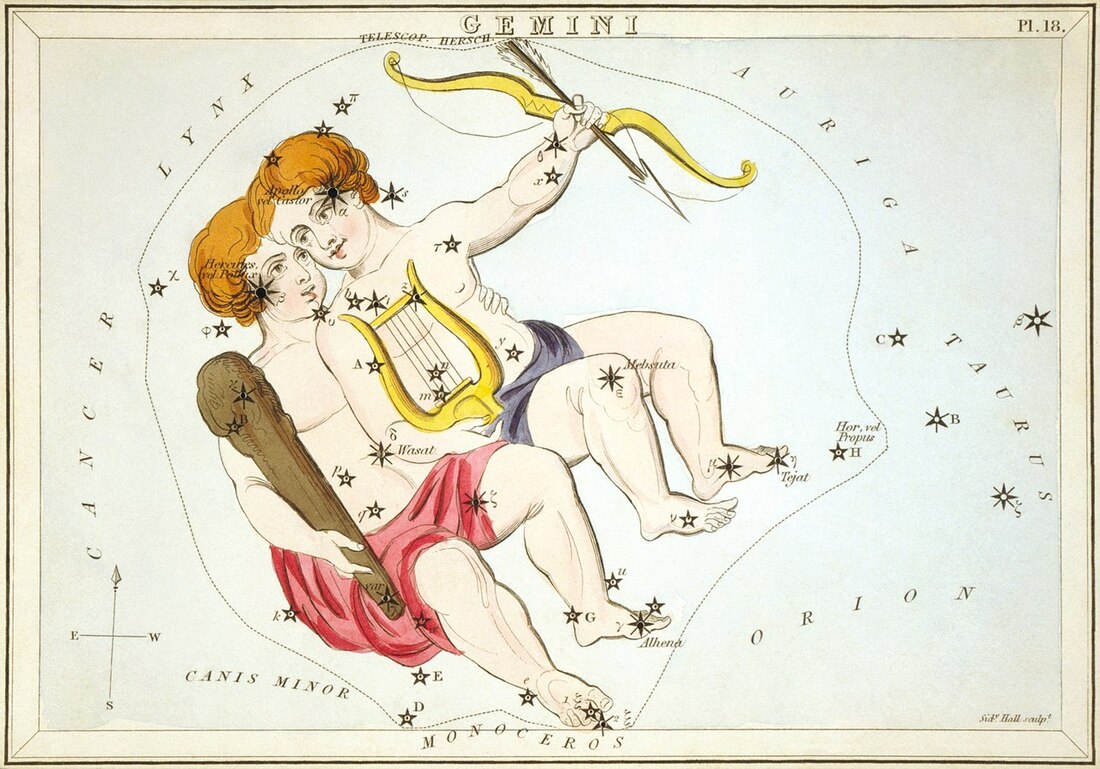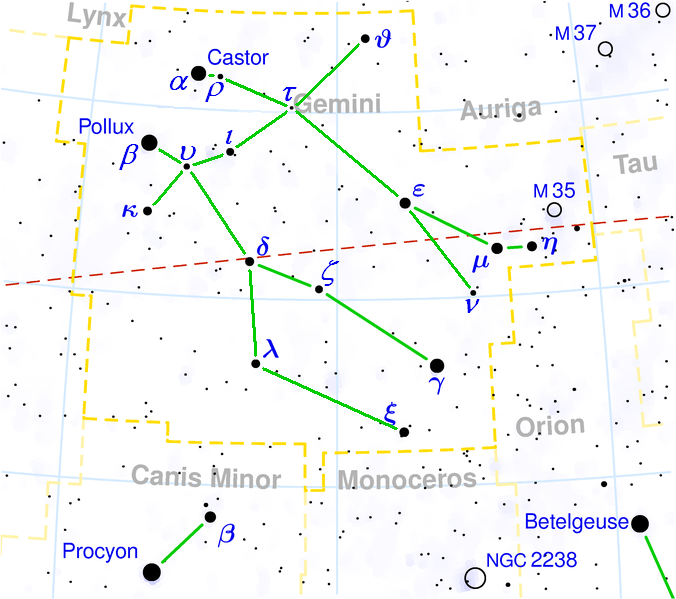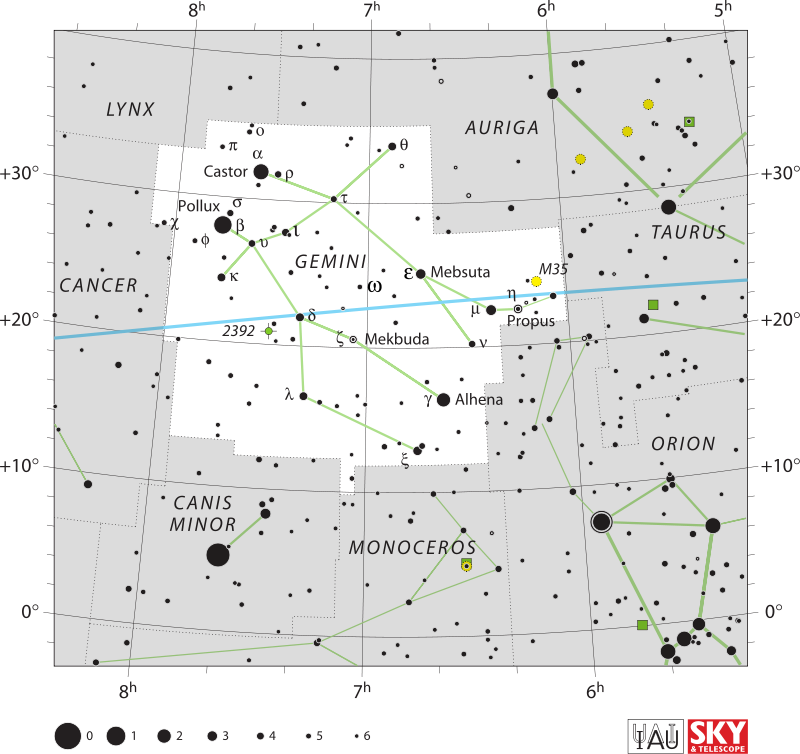Gemini is a constellation in the zodiac that can be found in the northern hemisphere of the sky. It was one of the forty-eight constellations described by Claudius Ptolemy in the second century, and it is now one of the eighty-eight modern constellations. Its name comes from the Latin word meaning twins, and it is linked to the Greek mythological twin’s Castor and Pollux and its old astronomical symbol (♊︎)
|
Gemini is a constellation that lies between Taurus and Cancer, with Auriga and Lynx to the north, Monoceros and Canis Minor to the south, and Orion to the south-west.
Cancer was the location of the Sun on the first day of summer in classical antiquity. Axial precession pushed it into Gemini during the first century AD. The Sun migrated from Gemini to Taurus on the first day of summer in 1990, and it will stay there until the 27th century AD when it will move into Aries. From June 21 to July 20, 2062, the Sun will pass through Gemini. Gemini is a prominent constellation in the northern hemisphere's winter skies, visible throughout the night in December and January. Finding the constellation's two brightest stars Castor and Pollux eastward from Taurus' iconic V-shaped asterism (the open cluster Hyades) and the three stars of Orion's Belt is the easiest method to find it (Alnitak, Alnilam, and Mintaka). Another option is to mentally draw a line from the Pleiades star cluster in Taurus and Regulus, the brightest star in Leo. An imaginary line is constructed that intersects Gemini roughly near the centre of the constellation, right below Castor and Pollux, and is quite close to the ecliptic. The Moon's passage across Gemini can be witnessed in a single night as it appears west of Castor and Pollux, then aligns and then appears east of them. |
|
|
Mythology
The stars Castor and Pollux were known as the Great Twins in Babylonian astronomy. The Twins were minor gods known as Meshlamtaea and Lugalirra, which meant 'The One who has risen from the Underworld' and 'The Mighty King,' respectively. Both names are titles of Nergal, the main Babylonian god of sickness and pestilence who was also the Underworld's monarch. (White 2008) Gemini was associated with the myth of Castor and Pollux, the children of Leda and the Argonauts, in Greek mythology. Pollux was Zeus's son, and he was the one who seduced Leda, whereas Castor was the son of Tyndareus, King of Sparta and Leda's husband. In their position as sailor protectors, Castor and Pollux were also mythologically linked to St. Elmo's fire. (Ridpath & Tirion 2001) Pollux implored his father Zeus to grant Castor immortality when he died because he was mortal, and he did so by merging them in the skies. |
|
Visualisations
Castor and Pollux, two bright stars that appear remarkably close together in an o shape, are the stars that dominate Gemini, reinforcing the legendary link between the constellation and twinship. Castor is the twin above and to the right (as seen from the Northern Hemisphere), and its brightest star is Gem, a second-magnitude star that symbolises Castor's head. Pollux is the twin below and to the left, with Gem (more generally known as Pollux) as its brightest star; it is of the first magnitude and portrays Pollux's head. In addition, the other stars can be seen as two parallel lines descending from the two major stars, giving the impression of two people. H. A. Rey has proposed an alternative to the classic depiction of twins holding hands by connecting the stars of Gemini. Gem represents Pollux's torso, Gem represents Pollux's right hand, and Gem represents Pollux's left hand; all three stars are the fourth magnitude. Pollux's pelvis is represented by the star Gem, Pollux's right knee is represented by Gem, Pollux's right foot is represented by Gem, Pollux's left knee is represented by Gem, and Pollux's left foot is represented by Gem. A gem is a second-magnitude object, whereas Gem is a third-magnitude object Gem represents Castor's torso, Gem represents Castor's left hand (which he shares with Pollux), and Gem represents Castor's right hand; all three stars are of the fourth zodiac. Castor's pelvis is symbolised by the star ε Gem, his left foot by v Gem, and his right foot by μ Gem and η Gem; they are all third magnitude stars. Pollux is the brightest star in this constellation. |
Deep-sky Objects
M35 – Open Cluster (Large and Elongated)
NGC 2158 – Open Cluster
NGC 2392 – Planetary Nebula (Clown-faced Nebula)
Abell 21 – Medusa Nebula – Planetary Nebula
NGC 2129 – Open Cluster
NGC 2158 – Open Cluster
NGC 2331 – Open Cluster
NGC 2355 – Open Cluster
Main stars - 17
Bayer stars - 80
Stars with planets - 8
Stars brighter than Magnitude 3.00 - 4
Stars within 32Ly - 4
Bordering
constellations
Meteor showers
Geminids – Mid-December 100 per hour
M35 – Open Cluster (Large and Elongated)
NGC 2158 – Open Cluster
NGC 2392 – Planetary Nebula (Clown-faced Nebula)
Abell 21 – Medusa Nebula – Planetary Nebula
NGC 2129 – Open Cluster
NGC 2158 – Open Cluster
NGC 2331 – Open Cluster
NGC 2355 – Open Cluster
Main stars - 17
Bayer stars - 80
Stars with planets - 8
Stars brighter than Magnitude 3.00 - 4
Stars within 32Ly - 4
Bordering
constellations
- Lynx
- Auriga
- Taurus
- Orion
- Monoceros
- Canis Minor
- Cancer
Meteor showers
Geminids – Mid-December 100 per hour
